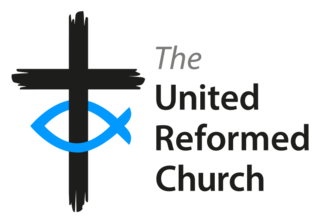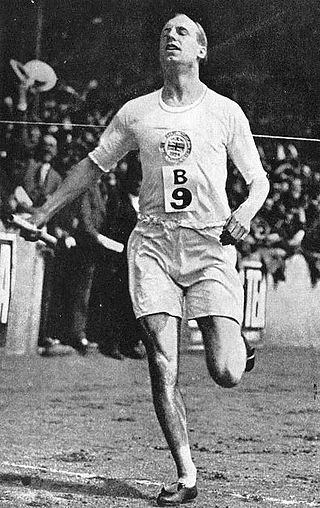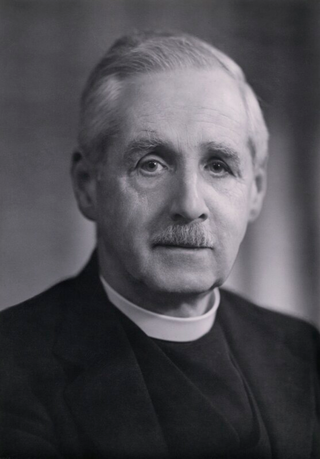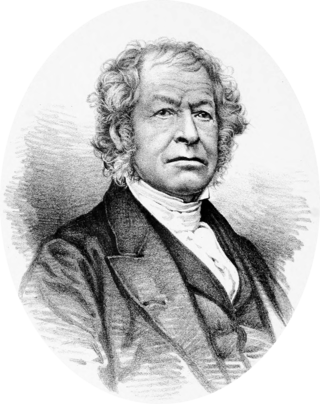Related Research Articles

The United Reformed Church (URC) is a Protestant Christian church in the United Kingdom. As of 2024 it had approximately 44,000 members in around 1,250 congregations with 334 stipendiary ministers.

Crieff is a Scottish market town in Perth and Kinross on the A85 road between Perth and Crianlarich, and the A822 between Greenloaning and Aberfeldy. The A822 joins the A823 to Dunfermline. Crieff has become a hub for tourism, famous for whisky and its history of cattle droving. Attractions include the Caithness Glass Visitor Centre and Glenturret Distillery. The nearby Innerpeffray Library is Scotland's oldest lending library. St Mary's Chapel beside it dates from 1508. Both are open to the public: the library is run by a charitable trust; the chapel is in the care of Historic Scotland.
The Iona Community, founded in 1938 by George MacLeod, is an ecumenical Christian community of men and women from different walks of life and different traditions within Christianity.

George Fielden MacLeod, Baron MacLeod of Fuinary, was a Scottish soldier and clergyman; he was one of the best known, most influential and unconventional Church of Scotland ministers of the 20th century. He was the founder of the Iona Community on the island of Iona and served as Moderator of the General Assembly of the Church of Scotland (1957).

Eric Henry Liddell was a Scottish sprinter, rugby player and Christian missionary. Born in Qing China to Scottish missionary parents, he attended boarding school near London, spending time when possible with his family in Edinburgh, and afterwards attended the University of Edinburgh.

John Baillie was a Scottish theologian, a Church of Scotland minister and brother of theologian Donald Macpherson Baillie.
The Free Church of Scotland is a conservative evangelical Calvinist denomination in Scotland. It is the continuation of the original Free Church of Scotland that remained outside the union with the United Presbyterian Church of Scotland in 1900, and remains a distinct Presbyterian denomination in Scotland.
Christianity in medieval Scotland includes all aspects of Christianity in the modern borders of Scotland in the Middle Ages. Christianity was probably introduced to what is now Lowland Scotland by Roman soldiers stationed in the north of the province of Britannia. After the collapse of Roman authority in the fifth century, Christianity is presumed to have survived among the British enclaves in the south of what is now Scotland, but retreated as the pagan Anglo-Saxons advanced. Scotland was largely converted by Irish missions associated with figures such as St Columba, from the fifth to the seventh centuries. These missions founded monastic institutions and collegiate churches that served large areas. Scholars have identified a distinctive form of Celtic Christianity, in which abbots were more significant than bishops, attitudes to clerical celibacy were more relaxed and there were significant differences in practice with Roman Christianity, particularly the form of tonsure and the method of calculating Easter, although most of these issues had been resolved by the mid-seventh century. After the reconversion of Scandinavian Scotland in the tenth century, Christianity under papal authority was the dominant religion of the kingdom.

As of the 2022 census, None was the largest category of belief in Scotland, chosen by 51.1% of the Scottish population identifying when asked: "What religion, religious denomination or body do you belong to?" This represented an increase from the 2011 figure of 36.7%. 38.8% identified as Christian with most of them declaring affiliation with the Church of Scotland and the Catholic Church. The only other religious persuasions with more than 1% affiliation were 'Other Christian' and Muslim at 5.1% and 2.2% of the total population, respectively.

James B. Torrance was a Scottish Protestant theologian, biblical scholar and academic. He was Professor of Systematic Theology at the University of Aberdeen.
The Presbytery of Glasgow is one of the 14 Presbyteries of the Church of Scotland. It dates back to the earliest periods of Presbyterian church government in the Church of Scotland in the late 16th century. The Presbytery of Glasgow currently has 125 congregations, making it by far the largest Presbytery in the Church of Scotland.
Thomas (Tom) Allan (1916-1965) was a minister and evangelist of the Church of Scotland, broadcaster, author, columnist and pioneer of practical church outreach in social work, primarily in the city of Glasgow. His notable achievements were recognised with one of the city's highest honours, the St Mungo Prize in 1964.

Scottish religion in the nineteenth century includes all forms of religious organisation and belief in Scotland in the 19th century. This period saw a reaction to the population growth and urbanisation of the Industrial Revolution that had undermined traditional parochial structures and religious loyalties. The established Church of Scotland reacted with a programme of church building from the 1820s. Beginning in 1834 the "Ten Years' Conflict" ended in a schism from the established Church of Scotland led by Dr Thomas Chalmers known as the Great Disruption of 1843. Roughly a third of the clergy, mainly from the North and Highlands, formed the separate Free Church of Scotland. The evangelical Free Church and other secessionist churches grew rapidly in the Highlands and Islands and urban centres. There were further schisms and divisions, particularly between those who attempted to maintain the principles of Calvinism and those that took a more personal and flexible view of salvation. However, there were also mergers that cumulated in the creation of a United Free Church in 1900 that incorporated most of the secessionist churches.

Church music in Scotland includes all musical composition and performance of music in the context of Christian worship in Scotland, from the beginnings of Christianisation in the fifth century, to the present day. The sources for Scottish Medieval music are extremely limited due to factors including a turbulent political history, the destructive practices of the Scottish Reformation, the climate and the relatively late arrival of music printing. In the early Middle Ages, ecclesiastical music was dominated by monophonic plainchant, which led to the development of a distinct form of liturgical Celtic chant. It was superseded from the eleventh century by more complex Gregorian chant. In the High Middle Ages, the need for large numbers of singing priests to fulfill the obligations of church services led to the foundation of a system of song schools, to train boys as choristers and priests. From the thirteenth century, Scottish church music was increasingly influenced by continental developments. Monophony was replaced from the fourteenth century by the Ars Nova consisting of complex polyphony. Survivals of works from the first half of the sixteenth century indicate the quality and scope of music that was undertaken at the end of the Medieval period. The outstanding Scottish composer of the first half of the sixteenth century was Robert Carver, who produced complex polyphonic music.

The history of popular religion in Scotland includes all forms of the formal theology and structures of institutional religion, between the earliest times of human occupation of what is now Scotland and the present day. Very little is known about religion in Scotland before the arrival of Christianity. It is generally presumed to have resembled Celtic polytheism and there is evidence of the worship of spirits and wells. The Christianisation of Scotland was carried out by Irish-Scots missionaries and to a lesser extent those from Rome and England, from the sixth century. Elements of paganism survived into the Christian era. The earliest evidence of religious practice is heavily biased toward monastic life. Priests carried out baptisms, masses and burials, prayed for the dead and offered sermons. The church dictated moral and legal matters and impinged on other elements of everyday life through its rules on fasting, diet, the slaughter of animals and rules on purity and ritual cleansing. One of the main features of Medieval Scotland was the Cult of Saints, with shrines devoted to local and national figures, including St Andrew, and the establishment of pilgrimage routes. Scots also played a major role in the Crusades. Historians have discerned a decline of monastic life in the late medieval period. In contrast, the burghs saw the flourishing of mendicant orders of friars in the later fifteenth century. As the doctrine of Purgatory gained importance the number of chapelries, priests and masses for the dead within parish churches grew rapidly. New "international" cults of devotion connected with Jesus and the Virgin Mary began to reach Scotland in the fifteenth century. Heresy, in the form of Lollardry, began to reach Scotland from England and Bohemia in the early fifteenth century, but did not achieve a significant following.

The evangelical revival in Scotland was a series of religious movements in Scotland from the eighteenth century, with periodic revivals into the twentieth century. It began in the later 1730s as congregations experienced intense "awakenings" of enthusiasm, renewed commitment and rapid expansion. This was first seen at Easter Ross in the Highlands in 1739 and most famously in the Cambuslang Wark near Glasgow in 1742. Most of the new converts were relatively young and from the lower groups in society. Unlike awakenings elsewhere, the early revival in Scotland did not give rise to a major religious movement, but mainly benefited the secession churches, who had broken away from the Church of Scotland. In the late eighteenth century and early nineteenth century the revival entered a second wave, known in the US as the Second Great Awakening. In Scotland this was reflected in events like the Kilsyth Revival in 1839. The early revival mainly spread in the Central Belt, but it became active in the Highlands and Islands, peaking towards the middle of the nineteenth century. Scotland gained many of the organisations associated with the revival in England, including Sunday Schools, mission schools, ragged schools, Bible societies and improvement classes.
David Patrick Thomson was a minister of the Church of Scotland who followed a vocation in Christian evangelism as a student, a parish minister, a director of Residential Centres, and as a Christian author and publisher.

Scottish Protestant missions are organised programmes of outreach and conversion undertaken by Protestant denominations within Scotland, or by Scottish people. Long after the triumph of the Church of Scotland in the Lowlands, Highlanders and Islanders clung to a form of Christianity infused with animistic folk beliefs and practices. From 1708 the Society in Scotland for Propagating Christian Knowledge (SSPCK) began working in the area. In 1797 James Haldane founded the non-denominational Society for the Propagation of the Gospel at Home. Dozens of lay preachers, divinity students and English preachers were sent to the region. In the early nineteenth century a variety of organisations were formed to support evangelism to the region.

The King's Hall is a church in Newington, Edinburgh, Scotland. Constructed as Newington Free Church in 1843, it is now used by Community Church Edinburgh: an independent evangelical congregation.

James Gibson was a Church of Scotland and Free Church minister. He worked in Glasgow. He engaged in the Voluntary Controversy on the side of the Establishment. He edited the Church of Scotland Magazine, from 1834 to 1837. Kingston church in Glasgow was built for him by William Campbell and other anti-voluntaries, in 1839. He joined the Free Church at the Disruption, in 1843. On the endowment of Glasgow Theological College by Dr. Clark of Wester Moffat, Dr. Gibson was nominated Professor of Church History and Systematic Theology. He offended a portion of his students by the expression of views on moral inability consequent on the Fall. He was an author, publishing "Present Truths in Theology", and many pamphlets and sermons on theological topics which were current at the time.
References
- ↑ P. T. Bisset, "Tell Scotland (1952-1965)" in Cameron, Nigel M. de S. (1993). Dictionary of Scottish Church History and Theology. Edinburgh: T.&T. Clark. pp. 332–3. ISBN 0-567-09650-5.; Frank D. Bardgett (2008) "The Tell Scotland Movement: failure and success" in Records of the Scottish Church History Society vol. XXXVIII, pp.105-149.
- ↑ Muir, Augustus (1958). John White. London: Hodder & Stoughton. p. 266.Dunnett, Arthur H. (1934). The Church in Changing Scotland. London: James Clarke & Co. Lld. pp. 13–20.
- ↑ The Call to the Church: The Book of the Forward Movement of the Church of Scotland Edinburgh: The Church of Scotland Offices 1931.
- ↑ S.J. Brown, "Forward Movement, Scottish" in Cameron, Nigel M. de S. (1993). Dictionary of Scottish Church History and Theology. Edinburgh: T.&T. Clark. pp. 332–3. ISBN 0-567-09650-5.
- ↑ MacLeod, George F. (1936) Are Not The Churchless Million Partly The Church's Fault? Edinburgh: The Church of Scotland Publication Committee, a pamphlet reprinting three articles previously published in Life & Work January 1936, pp.5-7, February 1936, pp.51-53 and March 1936, pp.94-97.
- ↑ Ferguson, Ronald (1990). George MacLeod. London: William Collins Sons & Co. pp. 115–119. ISBN 0 00 627576-1.
- ↑ Ferguson, Ronald (1990). George MacLeod. London: William Collins Sons & Co. pp. 147–151. ISBN 0 00 627576-1.
- ↑ "The Recall to Religion: Primate's Tribute to Scotland". The Glasgow Herald. 30 May 1938. accessed via news.google.com, 04.09.14.
- ↑ Bardgett, Frank (2010) Scotland's Evangelist D.P. Thomson. Haddington: The Handsel Press pp.152-157, 159.
- ↑ Secretariat for Evangelism (1954) Ecumenical Studies: Evangelism in Scotland Geneva: The World Council of Churches p.31.
- ↑ John Baillie, 'Preface' (1945) God's Will for Church and Nation London: SCM Press, pp.7-8;Secretariat for Evangelism (1954) Ecumenical Studies: Evangelism in Scotland Geneva: The World Council of Churches p.55.
- ↑ Highet, John (1960). The Scottish Churches: a review of their state 400 years after the Reformation. London: Skeffington & Son. pp. 127–136. George F. MacLeod (1952) A Message of Friendship: the principles of a parish mission Glasgow: The Iona Community; Secretariat for Evangelism Ecumenical Studies: Evangelism in Scotland Geneva: The World Council of Churches pp.38-39.
- ↑ Highet, John (1960). The Scottish Churches. London: Skeffington & Son. pp. 74–80. Bardgett, Frank, (2010) Scotland's Evangelist, D.P. Thomson Haddington: The Handsel Press, pp.236-253.
- ↑ Highet, John (1960). The Scottish Churches. London: Skeffington & Son. pp. 82–83. Roberts, Colin A. (ed.) (1945) These Christian Commando Campaigns London: The Epworth Press describes the origin of this style of campaign in post-war England.
- ↑ Dinwiddie, Melville (1968). Religion by Radio: its place in British broadcasting. London: Allen & Unwin. p. 102. ISBN 0042010136.Falconer, R.H.W. (1950). Success and failure of a Radio Mission. London: SCM Press.Falconer, Ronnie (1978). The Kilt under My Cassock (paperback. ed.). Edinburgh: The Handsel Press. pp. 70–82. ISBN 0-905312-02-3.
- ↑ Small, Mabel (1975) Growing Together: Some Aspects of the Ecumenical Movement in Scotland 1924-64 Dunblane: Scottish Council of Churches, (limited circulation) covers the institutional history of Tell Scotland.
- ↑ Falconer, Roddie (1978). The Kilt under My Cassock (paperback ed.). Edinburgh: The Handsel Press. pp. 75–77. ISBN 0-905312-02-3.
- ↑ Bardgett, Frank, (2010) Scotland's Evangelist, D.P. Thomson Haddington: The Handsel Press, p.299; Small M. (1964) Growing Together: The Ecumenical Movement in Scotland 1924-64 Dunblane: Scottish Council of Churches, limited circulation.
- ↑ Frank D. Bardgett (2008) "The Tell Scotland Movement: failure and success" in Records of the Scottish Church History Society vol. XXXVIII, pp.116-117, quoting from an address by Tom Allan.
- ↑ Bardgett, Frank, (2010) Scotland's Evangelist, D.P. Thomson Haddington: The Handsel Press, p.299.
- ↑ Allan, Tom (1954) The Agent of Mission: the lay group in evangelism, its significance and its tasks Glasgow: Tell Scotland; Allan, Tom (1955) The Congregational Group in Action.Glasgow: Tell Scotland.
- ↑ Frank D. Bardgett (2008) "The Tell Scotland Movement: failure and success" in Records of the Scottish Church History Society vol. XXXVIII, p.133.
- ↑ Shannon, Bill (2000) Tom Allan in a Nutshell The Handsel Press,p.11. ISBN 1 871828 53 8.
- ↑ Ferguson, Ronald (1990). George MacLeod. London: William Collins Sons & Co. p. 271. ISBN 0 00 627576-1.
- ↑ Shannon, Bill (2000) Tom Allan in a Nutshell The Handsel Press,p.12. ISBN 1 871828 53 8.
- ↑ Ferguson, Ronald (1990). George MacLeod. London: William Collins Sons & Co. pp. 270-275. ISBN 0 00 627576-1.
- ↑ Allan, Tom (ed.) (1955) Crusade in Scotland ... Billy Graham London: Pickering & Inglis p.8.
- ↑ "Report of the Home Board" in Reports to the General Assembly 1956 Edinburgh: The Church of Scotland p.233.
- ↑ Frank D. Bardgett (2008) "The Tell Scotland Movement: failure and success" in Records of the Scottish Church History Society vol. XXXVIII, pp.129-130.
- ↑ Bardgett, Frank, (2010) Scotland's Evangelist, D.P. Thomson Haddington: The Handsel Press, p322.
- ↑ Bardgett, Frank, (2010) Scotland's Evangelist, D.P. Thomson Haddington: The Handsel Press, pp.320-334.
- ↑ Fasti Ecclesiae Scoticanae, Edinburgh: Oliver & Boyd (vols. 1-9); also Saint Andrew Press (vol. 10) summarizes Allan's career in the Church of Scotland in vol.9 p.284 and vol. 10 p.175.
- ↑ Small M. (1964) Growing Together: The Ecumenical Movement in Scotland 1924-64 Dunblane: Scottish Council of Churches pp.77, 92, 114-130; Highet, John (1960). The Scottish Churches. London: Skeffington & Son. pp. 126-127.
- ↑ Small M. (1964) Growing Together: The Ecumenical Movement in Scotland 1924-64 Dunblane: Scottish Council of Churches pp.88-106.
- ↑ Our Church Correspondent. "Tell Scotland looks to the future". No. 13 January 1962 page 11. The Glasgow Herald.
{{cite news}}:|last1=has generic name (help) - ↑ D.B. Forrester, "Ecumenical Movement" in Dictionary of Scottish Church History and Theology. Edinburgh: T.&T. Clark. pp. 273-275. ISBN 0 567 09650 5.; Frank D. Bardgett (2008) "The Tell Scotland Movement: failure and success" in Records of the Scottish Church History Society vol. XXXVIII, pp.146-147.
- ↑ Highet, John (1960). The Scottish Churches. London: Skeffington & Son. pp. 89–123.
- ↑ Brown, Callum G. (2001). The Death of Christian Britain (paperback ed.). London: Routledge. pp. 163–5 (figure 7.2, Church of Scotland communicants as proportion of Scottish population 1900–98). ISBN 0-415-24184-7.
- ↑ Thomson, D.P. (1966) Dr. Billy Graham and the pattern of modern evangelism Crieff: The Book Department, St Ninian's, p.40-41.
- ↑ Falconer, Ronnie (1978). The Kilt under My Cassock (paperback. ed.). Edinburgh: The Handsel Press. pp. 81–82. ISBN 0-905312-02-3.
- ↑ James Whyte "Foreword" in Allan, Tom The Face of My Parish Glasgow: Loudoun Publications Ltd (1984 ed.) p.6, citing a Report to the General Assembly of the Church of Scotland.
- ↑ Bisset, P. (1986) The Kirk and Her Scotland Edinburgh: The Handsel Press p.9; and P. Bisset, "Training for Evangelism" in Wright & Gray (eds.)(1987) Local Church Evangelism Edinburgh: Saint Andrew Press p.114.
- ↑ Bebbington, D.W. (1989). Evangelicalism in Modern Britain . London: Unwin Hyman Ltd / Routledge. p. 259. ISBN 0-415-10464-5.
- ↑ Ferguson, Ronald (1990). George MacLeod. London: William Collins Sons & Co. p.275. ISBN 0 00 627576-1.
- ↑ Barclay, Oliver (1997). Evangelicalism in Britain 1935-1995: a personal sketch. Leicester: Inter Varsity Press. pp. 90–91. ISBN 0-85111-189-0.
- ↑ Maitland, James (1998) New Beginnings - breaking through into unity Edinburgh: Saint Andrew Press p.7.
- ↑ Brown, Callum G. (2001). The Death of Christian Britain (paperback ed.). London: Routledge. pp. 173–176f. ISBN 0-415-24184-7.
- ↑ Frank D. Bardgett (2008) "The Tell Scotland Movement: failure and success" in Records of the Scottish Church History Society vol. XXXVIII, pp.127-140 and Frank D. Bardgett (2010) "D.P. Thomson and the Orkney Expedition: a Tell Scotland case study" in Records of the Scottish Church History Society vol. XL, PP.222-226.